Many years ago, we paddled through Tortuguero National Park’s waterway canals in a tipsy canoe. Gliding through the wetlands, we snuck up on birds, river turtles, and caimans. On our most recent visit to Tortuguero, our situation had changed. This time, with two little boys in tow, we opted for a more stable boat tour. We thought we wouldn’t see as much wildlife but were pleasantly surprised. In this post, we’ll share our experience exploring the Tortuguero canals by boat.
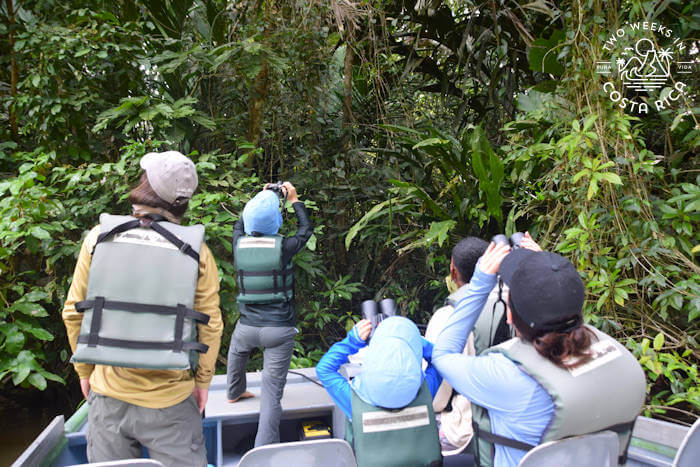
Background & Location
Tortuguero is a small town on Costa Rica’s northern Caribbean coast. Surrounded by vast wetlands and a long stretch of beach, it is a difficult-to-access wildlife haven.
When in Tortuguero, one of the most popular activities to do is visit Tortuguero National Park. While the park does have some land trails and turtle-nesting beaches, a highlight for nearly everyone is a tour of the park’s waterway canals.
A local guide association in Tortuguero village offers canoe and kayak tours, but like we mentioned, these weren’t right for our family.
Tortuguero Canals Boat Tour
Our boat tour started at Tortuga Lodge where we were staying. The hotel had arranged it for us in advance, and our guide, Fabian, was waiting for us at the reception. Many other lodges have their own boats and offer these tours as well.
Donning life jackets, our family stepped into the waiting boat. Our captain, Johan, slowly motored away from the dock.
First Stop – Tortuguero National Park
Just 10 minutes down the wide canal, we pulled up to the dock at Tortuguero National Park. This is the first stop for everyone visiting the park’s waterways. Since the canals are part of the national park, you have to stop here to purchase park tickets.
While our guide hopped out and bought our tickets from the ranger, we walked up a spiral stairway to a viewing tower.
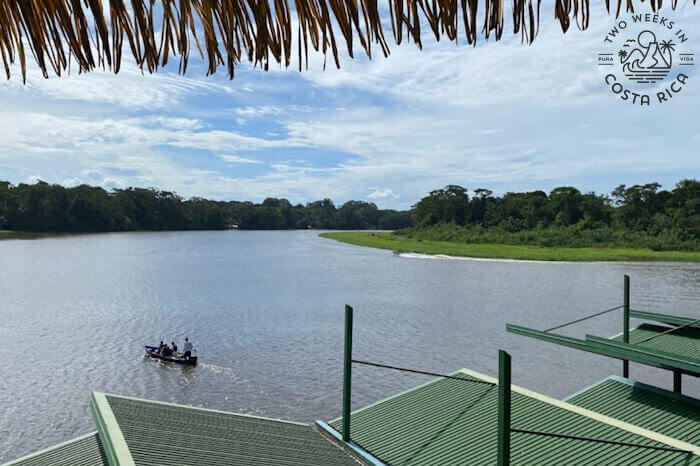
Perched from high above we could see how vast the wetlands were. They stretched as far as the eye could see.
Tortuguero National Park is massive, protecting over 190,000 acres (76,937 hectares). Amazingly only one percent is used for tourism and the rest is kept completely wild.
The Main Canals
After loading back into the small motorboat, our guide, Fabian, began to explain more about the park.
He told us how it is a very important ecosystem for migratory birds. These birds either spend their winters in Costa Rica or stop to rest and eat on their way to other countries.
As we motored swiftly down the wide canal, Fabian told us that the tall trees around us were great for spotting predatory birds. There was even a recent sighting, he said, of a Crested Eagle. This bird is one of the largest eagles and very rare. It can have a wingspan of more than five feet (1.5 meters).
As we rode, we noticed that the canals around Tortuguero are sort of like roads. Since the town has no paved roads, boats travel up and down these waterways to get to the mainland and other villages. There are even signs at intersections, pointing the way.
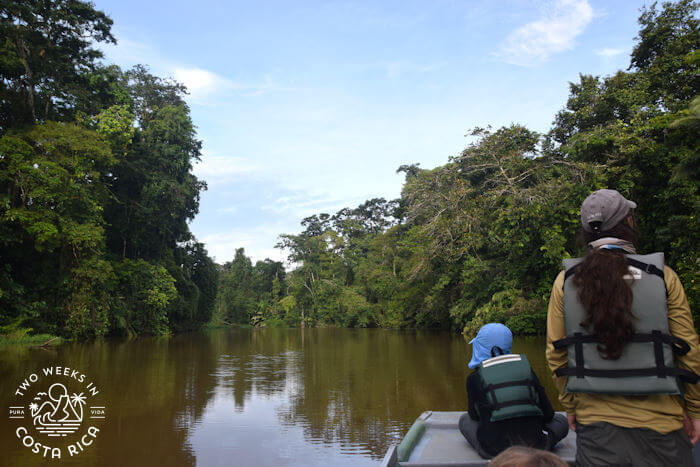
We didn’t see a whole lot of wildlife along this part of the canal, aside from several heron species, vultures, and some iguanas. It was quite beautiful, however, with all the tall trees and green vegetation along the banks.
Narrow Canals and Inlets
The next portion of our tour navigated through some narrower passageways. We immediately began to see more along the banks.
Right in front of the boat was a family of howler monkeys, eating fruits and leaves from a tree. Johan stopped the boat near them so that we could take pictures and get a closer look through binoculars.
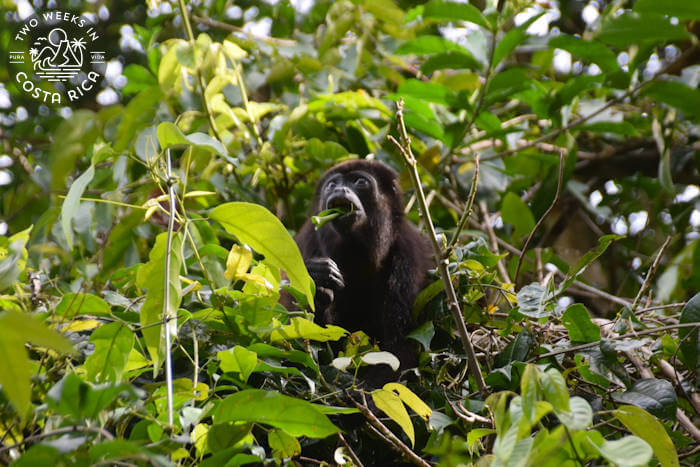
After a few minutes we continued, passing some interesting trees. One had a large brown fruit or seed pod. Our guide explained that it was called a provision tree because the leaves and flowers could be eaten. We also learned later that it is also called a money tree, the same type that is kept as a common houseplant.
We continued slowly, the banks of the canal getting closer and closer to the boat. We really felt like we were in the jungle now.
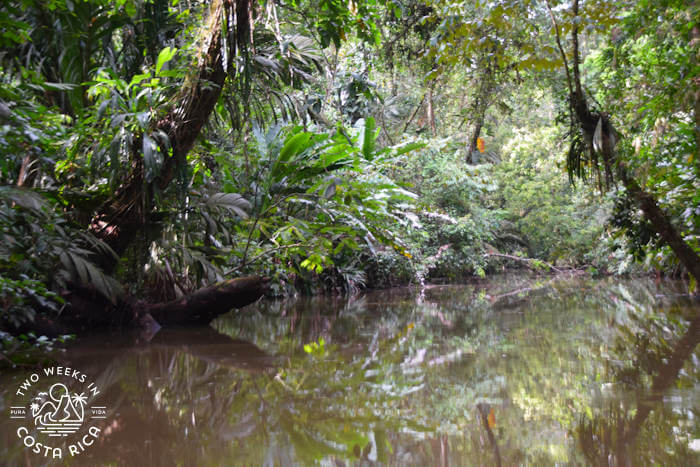
This part of the tour was the best for wildlife viewing. We had thought that only kayaks and canoes could go so deep into the mangroves, but Johan navigated the boat carefully and quietly.
Wildlife Highlights
Reptiles
Some of the wildlife we came across included an emerald basilisk lizard, known for its ability to run across the surface of the water. There was also a shy river turtle that slipped off a log under the water.
Another reptile we spotted was a caiman, a smaller species of crocodile that is the most common type in the Tortuguero canals. This one was only about three feet (one meter) long, but they can get much bigger. As we approached, it watched us carefully with its bright orange eyes.
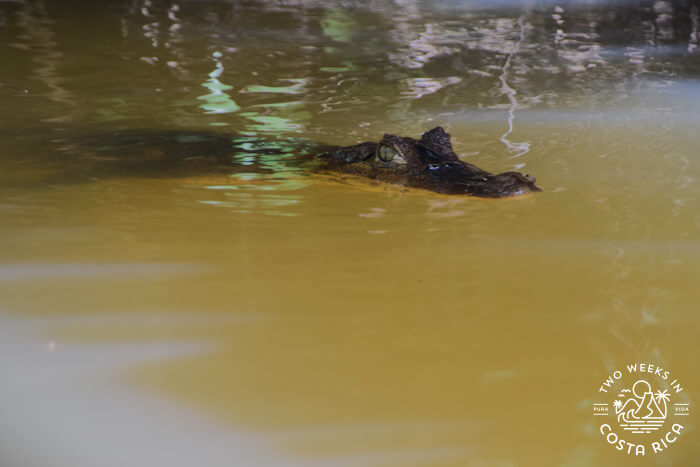
Birds
For birds, we were lucky to spot a male and female Great Curassow. They were hiding in the thick tree roots. Fabian told us that these turkey-sized birds indicate a healthy ecosystem since they prefer undisturbed environments.
We also sat and watched a Crowned Woodnymph hummingbird dart between flowers on the bank. This hummingbird had brilliant green, blue, and purple feathers that are almost iridescent. Unfortunately, it was too quick for our camera.
Later, we did get some nicer camera shots of a Northern Jacana and Green Heron.
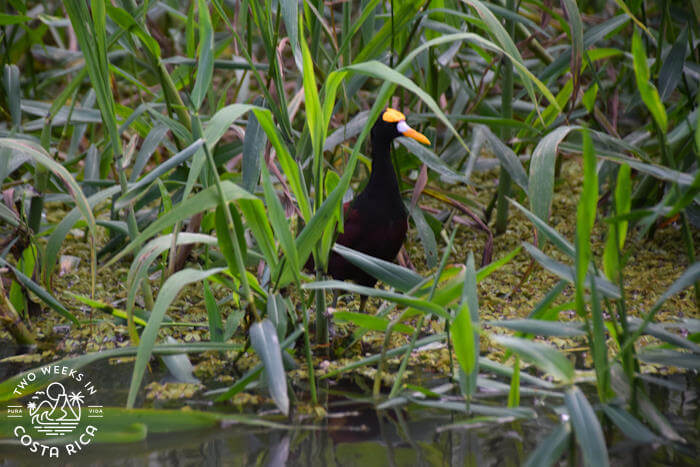
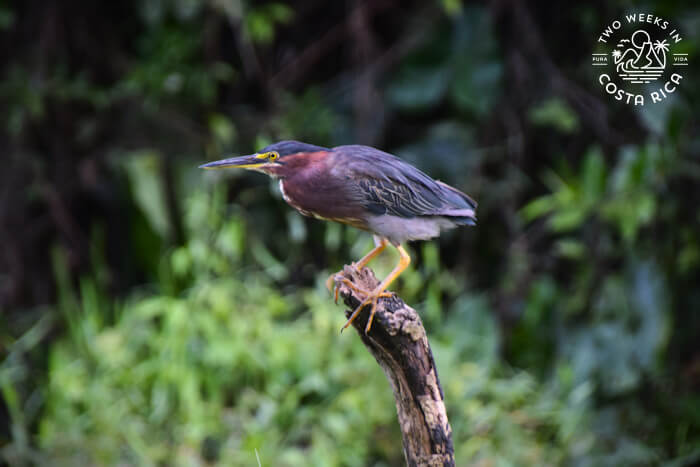
Spider Monkeys
Probably the most memorable wildlife encounter on this tour were the spider monkeys. These are not that common to see in Costa Rica. They are hard to spot because they move quickly through the tall trees. There are also fewer of them.
Fortunately for us, we came across an entire family. And three of them were a bit curious and came down to look at us, letting us get a closer glimpse of them in the process.
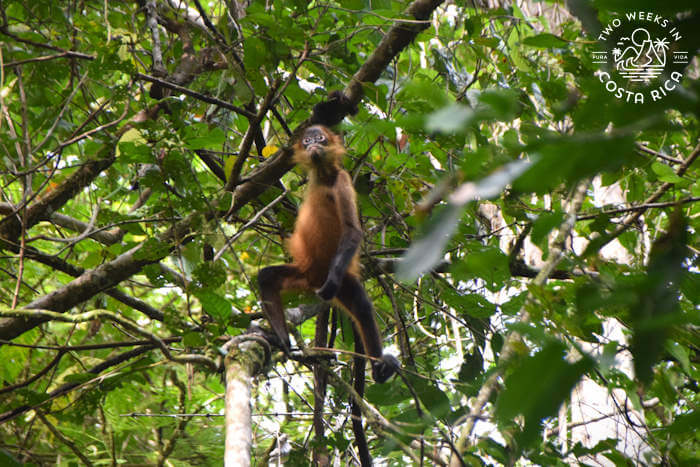
While we watched them effortlessly swing around the branches, Fabian told us a little more about them.
One cool fact was that they have the strongest prehensile tail of all mammals. We could actually see them using their tails a lot as they moved. He also said that they have evolved to have no thumb on their hand. This was so that they can swing better on the branches.
Booking a Tortuguero Canal Boat Tour
Most eco-lodges in Tortuguero offer canal boat tours with their packages. We stayed at the Tortuga Lodge, which not only had a great location and excellent food, but also very knowledgeable guides. If you are staying at a different lodge, they will likely offer a similar experience.
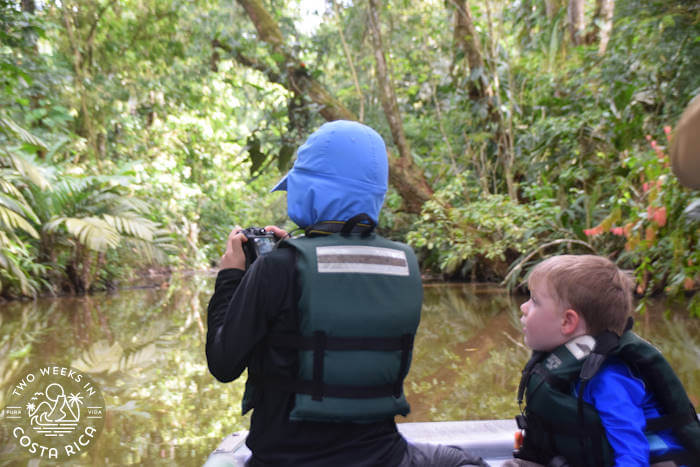
For those staying in Tortuguero village, there are a few smaller tour operators who offer boat tours. Kayak and canoe tours are also very popular through the guide association. It is located near the Almond Tree Dock, the main dock in town.
Conclusion
We were pleasantly surprised with the amazing wildlife we saw on the Tortuguero canal boat tour. Our guide was really knowledgeable and passionate to share everything that we saw. This helped keep both the kids and parents engaged and excited. If you are in Tortuguero, we’d highly recommend it.
Have a question about the Tortuguero canal boat tour? Leave a comment below. Already been? Share what you saw.
Looking for more information on Tortuguero? Check out these posts:
Getting to Tortuguero – Our guide on the best ways to access Tortuguero. Includes public boat schedules.
Cerro Tortuguero – This is a fun hike near Tortuguero. A short trail leads you to a forested stairway and eventually an amazing viewpoint.
Tortuguero Sea Turtle Nesting Tour – Another popular guided tour that happens at night. If you are lucky, you’ll witness mother sea turtles laying their eggs on Tortuguero’s beaches.
